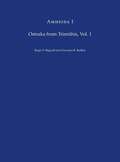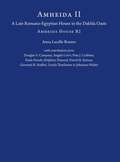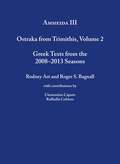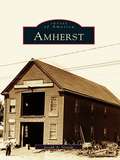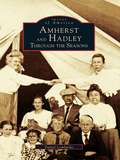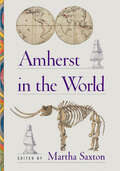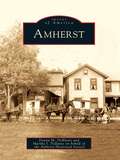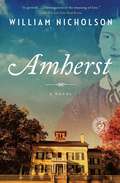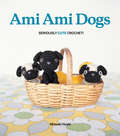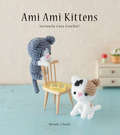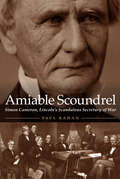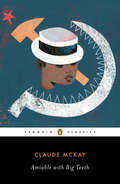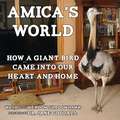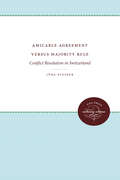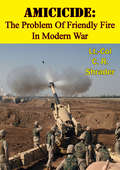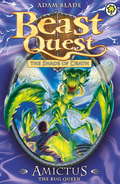- Table View
- List View
Amgen Inc.'s Epogen--Commercializing the First Biotech Blockbuster Drug
by Felix Oberholzer-Gee Dennis YaoAmgen Inc.'s Epogen was the first biotech blockbuster drug. Epogen helped prevent anemia, a condition that leads to severe fatigue, increased risk of cardiovascular disease, and even death. At the time, the market for Epogen, which included dialysis patients and persons with cancer undergoing chemotherapy, was estimated to be a $1 billion opportunity. After a critical scientific breakthrough, which allowed Amgen to identify the EPO gene, the company applied for a number of patents to protect its achievement. However, much to its surprise, Amgen learned that EPO had already been patented. Genetics Institute, the holder of the patent, demanded a royalty-free cross-license. Amgen's manager needed to decide how best to compete with its rival.
Amgen, Inc.: Planning the Unplannable
by Nitin Nohria James D. BerkleyBy the early 1990s, Amgen--a pharmaceutical company started little over a decade ago as Applied Molecular Genetics--was within range of becoming a billion-dollar company. With two extremely successful biotechnology drugs on the market, Amgen stood as the largest and most powerful independent company of its type in the world. Top executives in the company viewed long-range planning as an important ingredient in the firm's success; many others--including some of the firm's scientists--were less sure. With Amgen's sales expected to continue to grow rapidly, the firm's long-range planning process would be put to the test. Shows the different, sometimes paradoxical perspectives held within a single, dynamically changing company toward the issue of long-range planning. Students are challenged to synthesize these views into a coherent picture of a firm's growth amid great uncertainty.
Amheida I: Ostraka from Trimithis, Volume 1 (ISAW Monographs #7)
by Roger S. Bagnall Giovanni R. RuffiniThis volume presents 455 inscribed pottery fragments, or ostraka,found during NYU’s excavations at Amheida in the western desert of Egypt. Themajority date to the Late Roman period (3rd to 4th century AD), a time of rapidsocial change in Egypt and the ancient Mediterranean generally. Amheida was asmall administrative center, and the full publication of these brief textsilluminates the role of writing in the daily lives of its inhabitants. Thesubjects covered by the Amheida ostraka include the distribution of food, theadministration of wells, the commercial lives of inhabitants, their education,and other aspects of life neglected in literary sources. The authors provide afull introduction to the technical aspects of terminology and chronology, whilealso situating this important evidence in its historical, social and regionalcontext. Online edition available as part of the NYU Library's Ancient World Digital Library and in partnership with the Institute for the Study of the Ancient World (ISAW).
Amheida II: A Late Romano-Egyptian House in the Dakhla Oasis: Amheida House B2 (ISAW Monographs #4)
by Anna Lucille BoozerThis archaeological report provides a comprehensive study of the excavations carried out at Amheida House B2 in Egypt's Dakhleh Oasis between 2005 and 2007, followed by three study seasons between 2008 and 2010.The excavations at Amheida in Egypt's western desert, begun in 2001 under the aegis of Columbia University and sponsored by NYU since 2008, are investigating all aspects of social life and material culture at the administrative center of ancient Trimithis. The excavations so far have focused on three areas of this very large site: a centrally located upper-class fourth-century AD house with wall paintings, an adjoining school, and underlying remains of a Roman bath complex; a more modest house of the third century; and the temple hill, with remains of the Temple of Thoth built in the first century AD and of earlier structures. Architectural conservation has protected and partly restored two standing funerary monuments, a mud-brick pyramid and a tower tomb, both of the Roman period.This volume presents and discusses the architecture, artifacts and ecofacts recovered from B2 in a holistic manner, which has rarely before been attempted in a full report on the excavation of a Romano-Egyptian house. The primary aim of this volume is to combine an architectural and material-based study with an explicitly contextual and theoretical analysis. In so doing, it develops a methodology and presents a case study of how the rich material remains of Romano-Egyptian houses may be used to investigate the relationship between domestic remains and social identity.
Amheida III: Ostraka from Trimithis, Volume 2 (ISAW Monographs #5)
by Roger S. Bagnall Rodney AstThis archaeological report provides a comprehensive study of the excavations carried out at Amheida House B2 in Egypt's Dakhleh Oasis between 2005 and 2007, followed by three study seasons between 2008 and 2010. The excavations at Amheida in Egypt's western desert, begun in 2001 under the aegis of Columbia University and sponsored by NYU since 2008, are investigating all aspects of social life and material culture at the administrative center of ancient Trimithis. The excavations so far have focused on three areas of this very large site: a centrally located upper-class fourth-century AD house with wall paintings, an adjoining school, and underlying remains of a Roman bath complex; a more modest house of the third century; and the temple hill, with remains of the Temple of Thoth built in the first century AD and of earlier structures. Architectural conservation has protected and partly restored two standing funerary monuments, a mud-brick pyramid and a tower tomb, both of the Roman period. This is the second volume of ostraka from the excavations Amheida (ancient Trimithis) in Egypt. It adds 491 items to the growing corpus of primary texts from the site. In addition to the catalog, the introductory sections make important contributions to understanding the role of textual practice in the life of a pre-modern small town. Issues addressed include tenancy, the administration of water, governance, the identification of individuals in the archaeological record, the management of estates, personal handwriting, and the uses of personal names. Additionally, the chapter "Ceramic Fabrics and Shapes” by Clementina Caputo breaks new ground in the treatment of these inscribed shards as both written text and physical object. This volume will be of interest to specialists in Roman-period Egypt as well as to scholars of literacy and writing in the ancient world and elsewhere.
Amherst
by Joseph A. GrandeAmherst depicts the breathtaking evolution of a small farming community into a major economic, educational, and medical hub of western New York. The book reveals how Amherst's rich soils, rapid falls, and near-Buffalo location led to the community's great progress and growth. In a single century, the population rose from just over four thousand in 1900 to one hundred fifteen thousand in 2000. Today, the town includes the thousand-acre campus of the new State University of New York at Buffalo and the Amherst Museum, visited by more than fifty thousand people each year.
Amherst College: The Campus Guide (The Campus Guide)
by Blair KaminAmherst College: The Campus Guide is an architectural tour of one of North America's most prestigious liberal arts colleges. Founded in Western Massachusetts some two hundred years ago, the one thousand-acre campus is a living museum of architectural history, bearing the imprint of distinguished firms in architecture and landscape architecture: Frederick Law Olmsted; McKim, Mead & White; Benjamin Thompson; Edward Larrabee Barnes; Shepley Bulfinch; and Michael Van Valkenburgh. Organized as a series of six walks, the guide interweaves the history of the college with the story of the campus's development. Newly commissioned photographs and a hand drawn pocket map enhance this engaging journey through Amherst's architecture, landscape, interior design, and sculpture.
Amherst and Hadley, Massachusetts (Images of America)
by Daniel LombardoOnce part of Hadley, the town of Amherst is known the world over as the home of celebrated poet Emily Dickinson. This photographic portrait of Emily'ssurroundings reveals the beautiful landscape that inspired her art, and also includes less typical but nonetheless significant images of hard-working farmhands, Irish laborers, Italian peanut vendors, riotous college students, and feuding factory workers. These two towns at the heart of the Connecticut River Valley have been appreciated by poets and artists for many years, and their bucolic and pastoral character is celebrated in this marvelous new examination of the towns' historyin photographs from 1860 through the early twentiethcentury. Famous residents of and visitors to the area are featured, including Dickinson, Robert Frost, Henry Ward Beecher and Noah Webster. Mr. Lombardo's book combines a serious look at these historical figures with a humorous perspective on some of the area's more colorful characters, such as Charles King, the Amherst barber who became famous for eating fifty eggs in fifteen minutes.
Amherst and Hadley: Through the Seasons (Images of America)
by Daniel LombardoNestled deep in the Connecticut River Valley areAmherst and Hadley, two New England towns responsible for the inspiration of many classic poets, writers, and thinkers of America. In Amherst and Hadley: Through the Seasons, the landscape changes continuously throughout the seasons. Each season brings its own natural beauty and dangers, from the scorching summers to the bitter winters.This photographic history offers a rare glimpse of Robert Frost's world of fire and ice. Visit a place where Ralph Waldo Emerson ate dinners with Emily Dickinson's family and see the site on which Noah Webster founded Amherst College. Look through a visual record of small towns, where the seasonal changes of the hills, fields, and woods inspired local writer Ray Stannard Baker and area photographer Clifton Johnson. Meander through a place that left fond memories in the hearts and minds of former Supreme Court Chief Justice Harlan Fiske Stone and writer Sylvia Plath.
Amherst in the World
by Martha SaxtonIn celebration of the 200th anniversary of Amherst College, a group of scholars and alumni explore the school’s substantial past in this volume. Amherst in the World tells the story of how an institution that was founded to train Protestant ministers began educating new generations of industrialists, bankers, and political leaders with the decline in missionary ambitions after the Civil War. The contributors trace how what was a largely white school throughout the interwar years begins diversifying its student demographics after World War II and the War in Vietnam. The histories told here illuminate how Amherst has contended with slavery, wars, religion, coeducation, science, curriculum, town and gown relations, governance, and funding during its two centuries of existence. Through Amherst’s engagement with educational improvement in light of these historical undulations, it continually affirms both the vitality and the utility of a liberal arts education. Contributions by Martha Saxton, Gary J. Kornblith, David W. Wills, Frederick E. Hoxie, Trent Maxey, Nicholas L. Syrett, Wendy H. Bergoffen, Rick López, Matthew Alexander Randolph, Daniel Levinson Wilk, K. Ian Shin, David S. Reynolds, Jane F. Thrailkill, Julie Dobrow, Richard F. Teichgraeber III, Debby Applegate, Michael E. Jirik, Bruce Laurie, Molly Michelmore, and Christian G. Appy.
Amherst: 1881-1982 (Images of America)
by Amherst Historical Society Donna M. Deblasio Martha I. PallanteEstablished in 1811, Amherst has been actively engaged in the quarrying of high-quality sandstone since before the American Civil War. The products of the town's quarries have graced buildings and other structures in the United States and around the world. The promise of work at the quarries drew potential employees from the surrounding countryside, as well as from across the ocean, giving the community's population its diverse character. This photographic history presents the unique and fascinating story of Amherst, the self-described "Sandstone Center of the World."
Amherst: A Novel
by William NicholsonFrom an Oscar-nominated screenwriter and the author of Motherland, a novel about two love affairs set in Amherst--one in the present, one in the past, and both presided over by Emily Dickinson.Alice Dickinson, a young advertising executive in London, decides to take time off work to research her idea for a screenplay: the true story of the scandalous, adulterous love affair that took place between a young, Amherst college faculty wife, Mabel Loomis Todd, and the college's treasurer, Austin Dickinson, in the 1880s. Austin, twenty-four years Mabel's senior and married, was the brother of the reclusive poet Emily Dickinson, whose house provided the setting for Austin and Mabel's trysts. Alice travels to Amherst, staying in the house of Nick Crocker, a married English academic in his fifties. As Alice researches Austin and Mabel's story and Emily's role in their affair, she embarks on her own affair with Nick, an affair that, of course, they both know echoes the affair that she's writing about in her screenplay. Interspersed with Alice's complicated love story is the story of Austin and Mabel, historically accurate and meticulously recreated from their voluminous letters and diaries. Using the poems of Emily Dickinson throughout, Amherst is an exploration of the nature of passionate love, its delusions, and its glories. This novel is playful and scholarly, sexy and smart, and reminds us that the games we play when we fall in love have not changed that much over the years.
Ami Ami Dogs 2
by Mitsuki HoshiThis Amigurumi handbook is filled with new breeds of adorable miniature puppies. Photos inside reveal the secret, devilish world of your little friends, along with easy-to-follow patterns to help you create them. These sweet creatures are perfect additions to any Amigurumi collection. The world needs more Ami Ami Dogs
Ami Ami Dogs: Seriously Cute Crochet
by Mitsuki HoshiThis Amigurumi handbook is filled with adorable photographsof puppies and easy-to-follow patterns to help youcreate them. Treat yourself to a darling friend to cuddle up with,make an entire family of puppies, or gift one to a loved one.The world needs moreAmi Ami Dogs
Ami Ami Kittens: Seriously Cute Crochet!
by Mitsuki HoshiThe third colorful and imaginative installment in the illustrated amigurumi series, following Ami Ami Dogs and Ami Ami Dogs 2. Amigurumi, which translates to knitted stuffed toy in Japanese, is the art of crocheting cute stuffed animals with large heads and small bodies. Ami Ami Kittens is packed with projects for all crochet lovers offering them directions and inspiration for creating a range of fun and irresistible yarn kittens. Detailed, easy-to-follow instructions, illustrations, and enchanting color photographs teach them how to create these super adorable felines of various breeds and types, including Tabby, Pointed, Black/White Solid, Black and White, Calico, Scottish Fold, Siamese, Russian Blue, Munchkin, Maine Coon, British Shorthair, and American Shorthair. Here, too, are instructions for transforming them into key chains, finger puppets, and magnets. Ami Ami Kittens covers a wide range of techniques, from basic crochet skills perfect for beginners to more challenging patterns for experts, and offers spiral methods to ensure that the stuffing stays inside the finished piece. Filled with pretty, fun, and irresistibly adorable young cats, Ami Ami Kittens provides hours of fun for every knitter-and cat lovers, too.
Amiable Scoundrel: Simon Cameron, Lincoln's Scandalous Secretary of War
by Paul KahanFrom abject poverty to undisputed political boss of Pennsylvania, Lincoln’s secretary of war, senator, chair of the Senate Foreign Relations Committee, and a founder of the Republican Party, Simon Cameron (1799–1889) was one of the nineteenth century’s most prominent political figures. In his wake, however, he left a series of questionable political and business dealings and, at the age of eighty, even a sex scandal. Far more than a biography of Cameron, Amiable Scoundrel is also a portrait of an era that allowed—indeed, encouraged—a man such as Cameron to seize political control. The political changes of the early nineteenth century enabled him not only to improve his status but also to exert real political authority. The changes caused by the Civil War, in turn, allowed Cameron to consolidate his political authority into a successful, well-oiled political machine. A key figure in designing and implementing the Union’s military strategy during the Civil War’s crucial first year, Cameron played an essential role in pushing Abraham Lincoln to permit the enlistment of African Americans into the U.S. Army, a stance that eventually led to his forced resignation. Yet his legacy has languished, nearly forgotten save for the fact that his name has become shorthand for corruption, even though no evidence has ever been presented to prove that Cameron was corrupt.Amiable Scoundrel puts Cameron’s actions into a larger historical context by demonstrating that many politicians of the time, including Abraham Lincoln, used similar tactics to win elections and advance their careers. This study is the fascinating story of Cameron’s life and an illuminating portrait of his times.
Amiable with Big Teeth
by Brent Hayes Edwards Claude Mckay Jean-Christophe CloutierA monumental literary event: the newly discovered final novel by seminal Harlem Renaissance writer Claude McKay, a rich and multilayered portrayal of life in 1930s Harlem and a historical protest for black freedom<p><p> The unexpected discovery in 2009 of a completed manuscript of Claude McKay’s final novel was celebrated as one of the most significant literary events in recent years. Building on the already extraordinary legacy of McKay’s life and work, this colorful, dramatic novel centers on the efforts by Harlem intelligentsia to organize support for the liberation of fascist-controlled Ethiopia, a crucial but largely forgotten event in American history. At once a penetrating satire of political machinations in Depression-era Harlem and a far-reaching story of global intrigue and romance, Amiable with Big Teeth plunges into the concerns, anxieties, hopes, and dreams of African-Americans at a moment of crisis for the soul of Harlem—and America.
Amica's World: How a Giant Bird Came into Our Heart and Home
by Jane Goodall Meadow Shadowhawk Washo ShadowhawkAmica is a rhea-a flightless bird in the ratite family, related to ostriches, emus, and kiwis. Amica was adopted as a young chick and in turn quickly adopted mother and son Meadow and Washo Shadowhawk as his flock and made himself at home in their living room.Now an adult, Amica stands nearly six feet tall, and has a six-foot wingspan. By day he roams the backyard, exploring, running, and building nests, along with his friends the chickens and the dog. At night, he watches television and sleeps in the living room with his friend the cat.What's it like living with a rhea? As you'll discover in the words and photos in this book, it is never boring, and requires massive sacrifices. Rheas, which are typically hunted or raised as livestock, are highly intelligent and expressive, with a humanlike range of emotions. Amica's extraordinary story shows the powerful and surprising connections that can be forged between humans and animals.
Amicable Agreement Versus Majority Rule: Conflict Resolution in Switzerland
by Jürg SteinerWhen the German edition of Steiner's masterful analysis of Switzerland's political system was first published in 1970 as Gewaltlose Politik und kulturelle Vielfalt, it was greeted by the American Political Science Review as a laudable departure from conventional comparative series." This new edition, extensively revised and expanded, makes Steiner's innovative study available to political theorists in the English-speaking world."Originally published 1974.A UNC Press Enduring Edition -- UNC Press Enduring Editions use the latest in digital technology to make available again books from our distinguished backlist that were previously out of print. These editions are published unaltered from the original, and are presented in affordable paperback formats, bringing readers both historical and cultural value.
Amicicide: The Problem Of Friendly Fire In Modern War [Illustrated Edition]
by Lt.-Col C. R. ShraderIncludes 10 detailed tables'War is often depicted in the textbooks as a well-orchestrated, albeit violent, exercise in which opposing units strive to achieve tactical and strategic objectives. That each side will suffer casualties in the process is taken for granted; they are the inevitable, if regretable, consequence of such a deadly undertaking. That each side is almost certain to suffer casualties inflicted by its own forces is not generally taken for granted. Yet, in each of America's wars, especially those of the twentieth century, a significant number of soldiers have been killed or wounded as the result of friendly fire. The fact that the percentage of casualties resulting from friendly fire from World War I through Vietnam has been extremely low does not make the accidental killing or wounding of one's own troops any less tragic or unpalatable. Nor does it offer much consolation to the commander responsible for the lives of his troops or to the soldier who runs the risk of falling victim to the fire of his own forces.To be sure, each branch of the Army and each of the Armed Services employ measures calculated to prevent incidents of friendly fire...Before one can undertake a serious and comprehensive analysis of friendly fire, these data must be found and brought together in one place.In Amicicide: The Problem of Friendly Fire in Modern War, LTC Charles R. Shrader has taken a major step toward the compilation of these data. In his well-informed narrative, he draws tentative conclusions about the causes and effects of friendly fire and offers recommendations for those who expect to study the subject further. He has, in short, produced a superb reference book and a springboard for a deeper and more comprehensive analysis of this grim and complex problem.'-Foreword
Amictus the Bug Queen: Series 5 Book 6 (Beast Quest #30)
by Adam BladeTom's quest to free the Mistress of the Beasts brings him to a sweltering jungle. There he must defeat cunning Amictus. But what chance does Tom have against the Beast's incredible speed? And what is the secret his father and Wizard Aduro are keeping from him?Don't missKRABB, MASTER OF THE SEA - HAWKITE, ARROW OF THE AIR - KOLDO THE ARCTIC WARRIOR - ROKK THE WALKING MOUNTAIN - TREMA THE EARTH LORD

